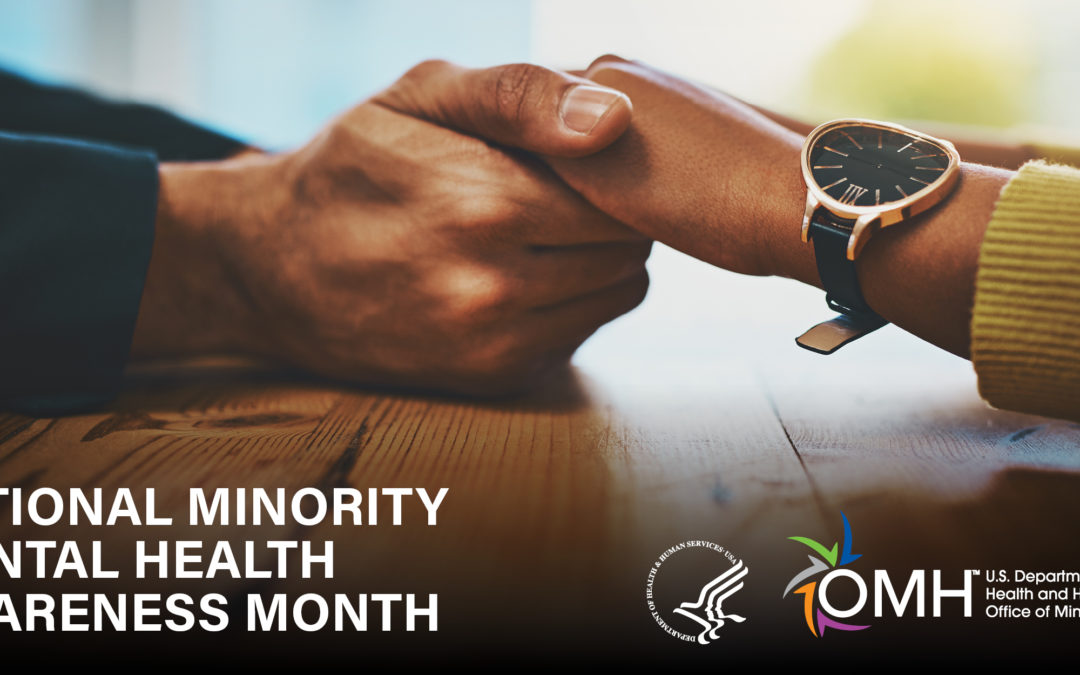July is Minority Mental Health Awareness Month and this year’s focus is particularly relevant. Minority populations have had significant stressors this year. The coronavirus pandemic, the national focus on race and systemic racism, and the economic fallout from an unstable economy have created a storm of emotions and concerns.
The National Alliance on Mental Illness (NAMI) and the U.S. Department of Health and Human Services Office of Minority Health (OMH) are particular champions of Minority Mental Health Awareness Month. Mental illness and mental health challenges can impact anyone with no regard to race, location, socioeconomic status, or gender. But how mental health is regarded and treated can vary greatly. So many factors significantly impact how someone seeks, has access to, receives, and talks about mental health.
This month is devoted to spreading awareness about the particular challenges minority populations face when thinking about mental health.
The OMH reveals some startling information from the Substance Abuse and Mental Health Services Administration (SAMHSA) and the CDC:
- In 2017, 10.5% (3.5 million) of young adults age 18 to 25 had serious thoughts of suicide including 8.3% of non-Hispanic blacks and 9.2% of Hispanics.
- In 2017, 7.5% (2.5 million) of young adults age 18 to 25 had a serious mental illness including 7.6% of non-Hispanic Asians, 5.7% of Hispanics and 4.6% of non-Hispanic blacks.
- Feelings of anxiety and other signs of stress may become more pronounced during a global pandemic.
- People in some racial and ethnic minority groups may respond more strongly to the stress of a pandemic or crisis.
Because of the vast gaps in health equity and access, many minority populations have trouble finding high-quality mental health care providers and/or a means of getting to a provider to receive care. The pandemic has created a unique situation that can actually be a benefit for some people who have trouble finding good care or getting to an office. Because so many healthcare appointments are now virtual, that could remove one barrier to receiving care, but is wholly dependent on access to reliable technology to be able to connect virtually.
Increased access also depends on changing much deeper levels of the healthcare system. Many mental health providers are overwhelmed with the increased demand for their services during the pandemic. And many providers choose to skirt the often tedious and time consuming insurance process and have opted not to accept insurance and are private pay only. Those two issues can actually create even steeper burdens for those already marginalized by the healthcare system.
MentalHealth.gov offers resources to help families, individuals, educators, and faith and community leaders to begin conversations around mental health among minority populations. Talking about mental health in a normalized and compassionate way can help reduce some of the stigma around mental health issues. People who feel like they can ask for help are often able to then take the steps to get the help they need. If they feel like they are not alone and they are not the only ones who might be struggling, then they will find that getting help is less of a burden. If they feel supported by their community, they feel less need to hide or even deny what they are feeling and experiencing.
Although July calls attention to minority mental health, the issue is one that needs constant attention, but particularly during this time of tremendous and chronic upheaval.
- WOC Nurses Week Highlights Specialty - April 16, 2024
- Honoring Radiology Nurses Day on April 12 - April 12, 2024
- Travel Offers New Career Possibilities - April 8, 2024



